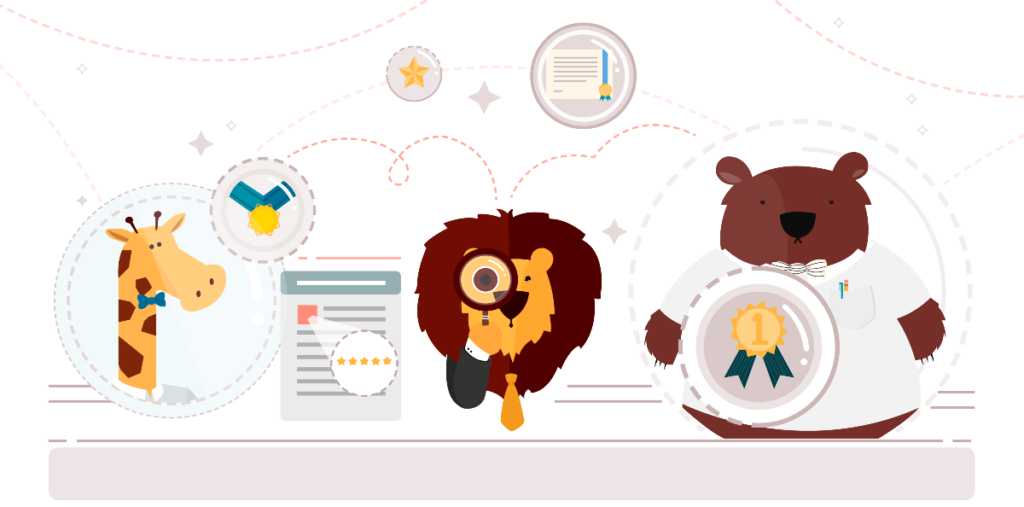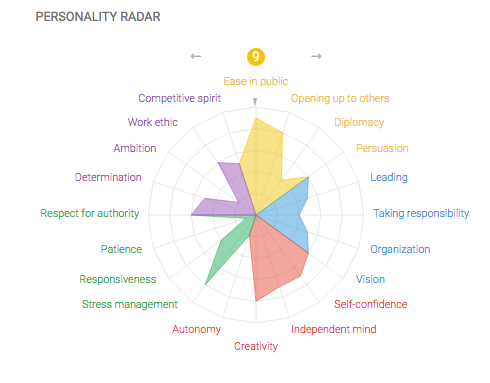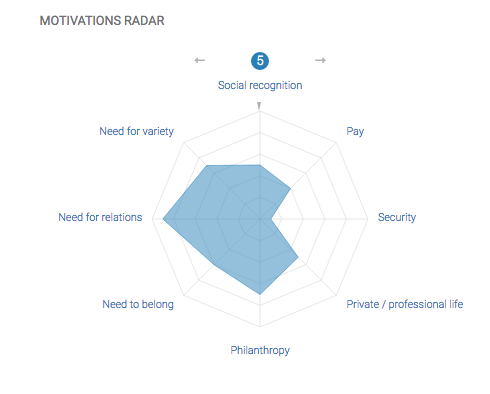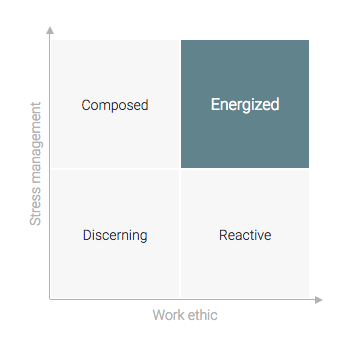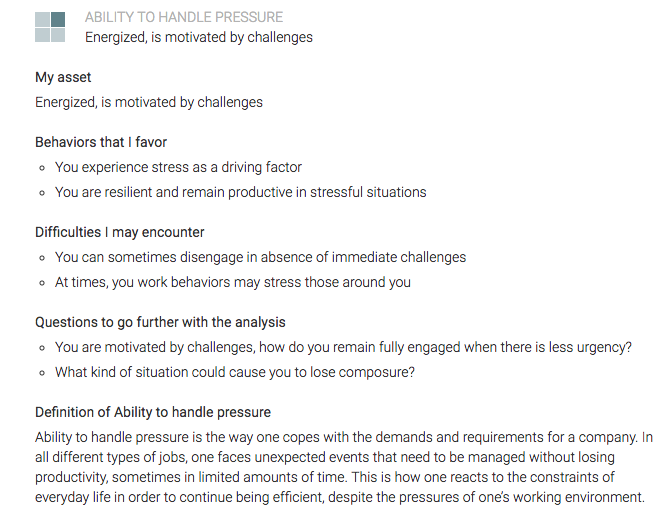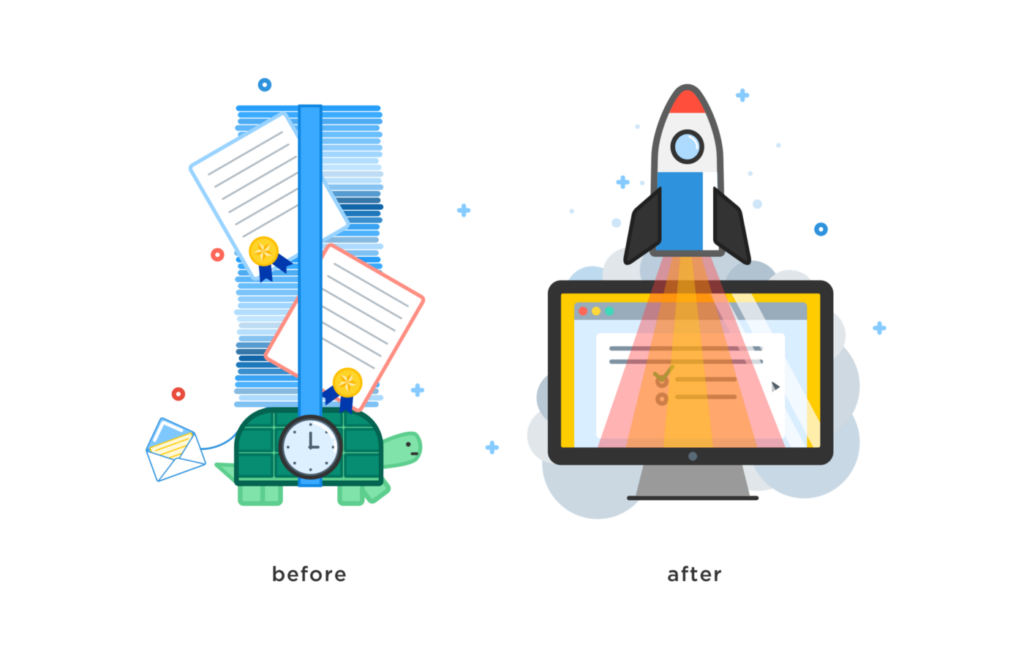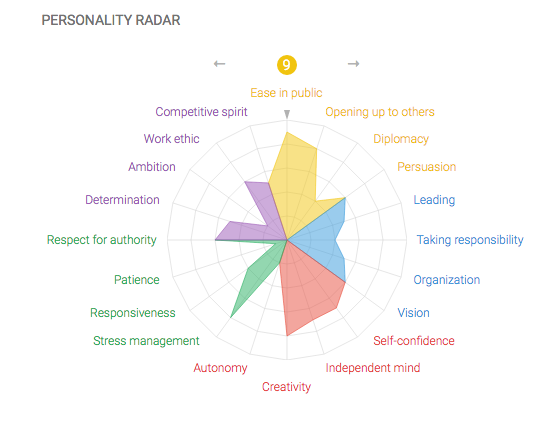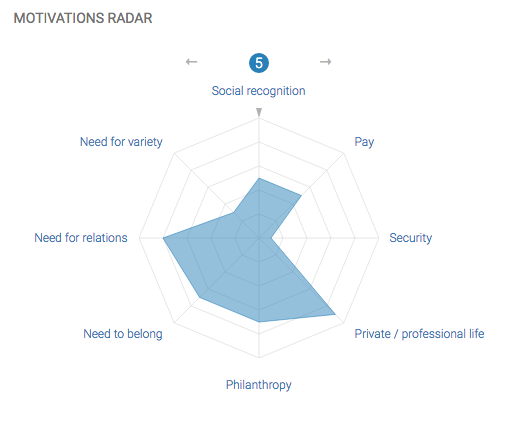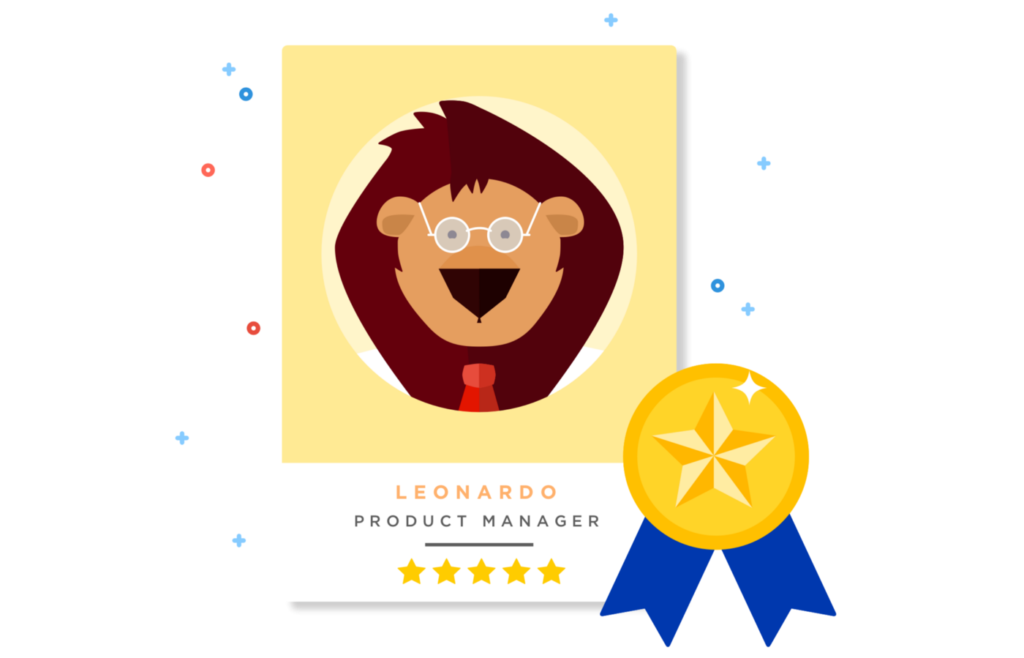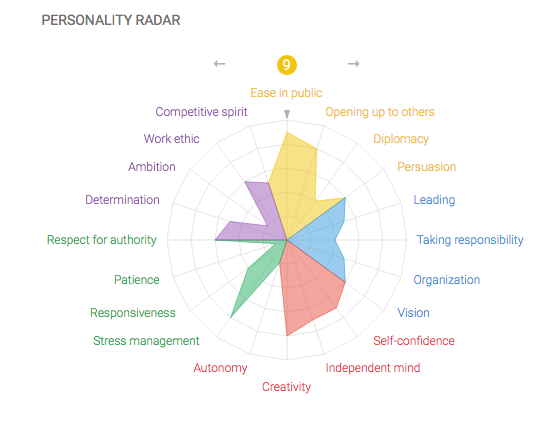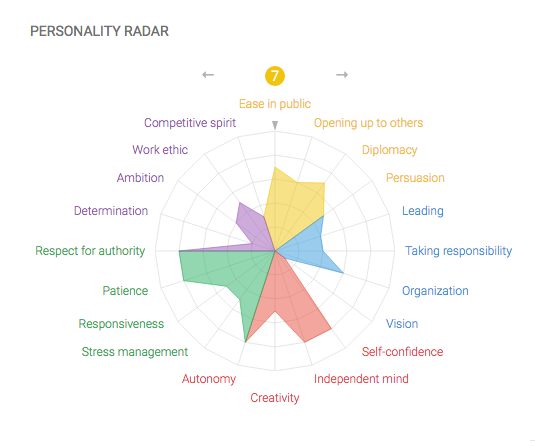Quick and easy tips for getting ahead of hiring in the new year

As the cyclic trends of hiring goes, there is typically a lull in hiring at the end of the year. Despite the temptation to leave things until next year, this is in fact a critical time to get your ducks in a line for a peak hiring season in January.
With extra time on their hands away from the office, job seekers are going to be on the hunt for their next job. While hunting down candidates is not ideal during the holiday season, ensuring that your job needs are visible online can ensure you have a pile of worthy resumes in your inbox come January 1st.
1. Utilize social media platforms
Social media platforms are for the most part free, easy ways to connect with job seekers. Before you head out for the new year, take time to post something on your company’s LinkedIn stating that you are hiring, or better yet post a link to the careers page on your website with the specific jobs you are hoping to hire in the new year.
Not sure what positions you will be filling or what your numbers will be until year end? You can still use the platforms to build your brand identity. Job seekers, especially millennials, care about the culture of your company and will be looking for that when searching for their next job. Team up with your marketing team to show a little of your company’s unique personality. Better yet, post a personality test that is designed to show employees motivations and help them find the right job, increasing job retention, talk about a win-win! Not only will you be attracting people who care about being in a job where they are happy and inspired (therefore performing best) but you will be showing that you care about them too.
2. Be quick to respond
If you don’t get a flood of applicants through the holiday season or you work for a smaller company, I would consider dedicating a small amount of time bi-weekly during your time off to respond to applicants. It can be a one-lined, quick response with the applicant’s name saying something simple like: “Thank you for your interest in the position, Andrew! I am out of the office until 1/2/2017 but will get back to with what’s next then. Enjoy the New Year!” Reaching out in this way will create a positive first impression with the candidate who is more likely than not applying to several other positions at different companies.
If you work at a larger company where a personal response to each applicant would take a team the entire vacation to respond to, make it a goal to prioritize getting back to the candidates as soon as you get back to the office. Do not worry about filtering through the resumes or the available positions first, or you will not be responding until weeks, maybe months later.
3. Consider using HR analytics in the new year
The new year is the perfect opportunity to pitch your vision for what hiring will look like at your company in the new year. Hiring analytics are becoming increasingly popular and for good reason. Below are a few reasons to jump on the hiring analytic train. Here’s what Forbes thinks about it:
- Analytics serve as trustworthy future-casters (think HR’s crystal ball)
- It increases ROI
- It take out the guesswork
- Hiring becomes more efficient and effective
- Promotes more in-house promotions
- It pays for itself
As you coast into the new year, remember that a little bit of planning for 2017 can have big payoffs. Happy hiring in 2017!
Curious to find out if your candidates have what it takes? Start your free trial today and test your candidates quickly & effectively for free!
Let’s face it, recruiting can be difficult. Let us help. Check out our other posts about hiring trends, tips and tricks.
Magical Beasts and how to hire them.

Hiring for your start up? Become a hiring wizard with this free webinar and these recruiting tips.
If you are an entrepreneur you want nothing short of mystical candidates. Individuals that make something out of nothing and can conjure a lead out of thin air. Whether your company has been around for one month or one hundred years, when you’re expanding into a new market, you have to hire with a start-up mentality. Hiring is an incredible opportunity, but it’s also a risk. As a start-up, you have fewer resources, so if a new hire doesn’t work out, it causes significant burden to the rest of the team. And if you’re managing a new team from a distance, the stakes are even higher. No pressure, but who you hire can make or break your start-up’s success!
If you want to learn all the ins and outs of recruiting for small companies and large companies alike tune into our free webinar on December 14th. Not only will you leave with valuable knowledge on how to assess your candidates soft skills & hard skills but we will also delve into the interview process and how to detect what is beyond the curtain. A professional recruiter give you her insights and you will leave with the tools to play psychologist and truly choose a candidate for the long haul.
But wait there is more..
In the mean time, lets discuss the traits you should look for in a candidate so you can land the perfect person for your company.
Interviewing is obviously the biggest tool recruiters currently use to find the right fit for a team. Interviewing candidates is an art, both from the interviewer and the interviewee standpoints. Some candidates are great at selling themselves, others more reserved. It could be they grew up in a culture where self-promotion was considered a vice, not a virtue, and not indicative of how well they’d perform in a role. Some recruiters are better than others at bringing out the best in candidates in a conversation.
So how do you know if a candidate will fly or flounder in your company’s entrepreneurial culture? Look for these traits:
- Accountability: Determine how the candidate owns his or her work. Notice if he or she answers questions with “I” or “We”. It’s imperative in a start-up that employees take full responsibility for their roles, tasks and actions.
- Self-motivation: In a start-up you don’t have as much time for rah-rah speeches and trying to light a fire under your team. You need an employee who has an intrinsic desire to work hard and perform well.
- Flexibility: One day the goal might be sales, the next traffic. Mission statements and organization charts evolve quickly. To succeed in a start-up, one must be able to adapt to change.
- Skill/Education: Certainly, having the right skills and education for a role brings results. The closer a candidate matches the expertise you need the less time they’ll need to be trained.
- Passion: Believing in the mission of your company and having a passion for the work you’re doing is key for start-up company employees. It’s what will keep them going in the middle of the night before a big launch.
- Resourceful: An ideal start-up employee knows how to solve problems, often with little resources. Like business Macgyvers, they can make big things happen with Excel and a couple of paper clips.
You don’t have to rely on hours of subjective interviews to figure out if your candidate is “the one.” Identifying a candidate’s personality traits objectively can be done using a people analytics tool like the Talentoday Manager. Here’s an example profile of a real person who is currently successful at a start-up. As you can see, with one glance you can identify areas of strength to match the profile you need.
Talentoday further identifies her as a great start-up candidate with these insights:
Creativity 8 / 10: She likes to be innovative and find original solutions. She is not very conventional.
Stress Management 8 / 10: She finds it easy to keep her cool in stressful situations. She performs well under pressure.
Motivations — Security 1 / 10: She does not need security in her work; she likes to take risks.
Motivation — Need for Relations 9 / 10: She is motivated by teamwork and relations with others are very important.
The most important asset a start-up has is its people. When reviewing your candidates, identifying their personality traits is even more important than evaluating their skills. With the right personality traits, an employee can gain experience and move up the ladder, developing into exactly the long-term magical beast you always dreamed of.
Curious to find out if your candidates have what it takes? Start your free trial today and test your candidate quickly & effectively for free!
Let’s face it, recruiting can be difficult. Let us help.
Join our free webinar to get in on the secrets of hiring for your start up
Do you Really Know Who You’re Interviewing?

A job interview can go anywhere from 15 minutes, if it’s not going well, to about an hour, if it’s going great! But is this polished, poised, prepared-to-impress you candidate the same person you’d see on a day-to-day basis? Interviewing is an art, and the decision to hire often is dependent on the interviewer’s instinct. “Unfortunately most research shows that you can only trust your gut when it comes to hiring about 50 percent of the time,” says Beverly D. Flaxington, author of Understanding Other People: The Five Secrets to Human Behavior in this ZipRecruiter article. “And a bad hire is costly and disruptive.”
There are ways to increase the odds that your instinct about a candidate is right and avoid costly bad hires. One way is to use a screening company like HireArt — they conduct the first round of video interviews over Skype for you. Another is to partner with a candidate matching service liked Hired.com, where your job openings get matched with resumes in their database. While that’s a very handy tool for matching skill and experience, it’s still only part of what will make an employee last long term. To truly understand whom you’re interviewing you need to introduce objective, personality assessment data into your evaluation. By giving candidates a 15-minute quiz using Talentoday, you’ll have:
- Unique insights you won’t get in an interview. The results will give you a clear understanding of what motivates and drives your candidate, as well as show you their predictive behaviors in seven key areas: teamwork, ability to take initiative, management style, ability to handle pressure, reasoning style, communication style, and flexibility. You’ll see how well a candidate works under pressure, and even what areas in which a candidate could improve.
- Candidate vs. Candidate comparisons. You’ll be able to see how your prospective hire ranks in personality, motivations and soft skills compared to others in your industry. There could be similarities and differences that will help you identify the kind of person you’re looking for.
- Candidate vs. Company comparison. Since Talentoday urges you to assess your team to get a sense of what you are looking for, it will be easy to see how or if your potential hire aligns. You can also widen the scope and see how the candidate fits within the culture of the whole company.
Here’s an example of Jennie, a real candidate who took the Talentoday assessment.
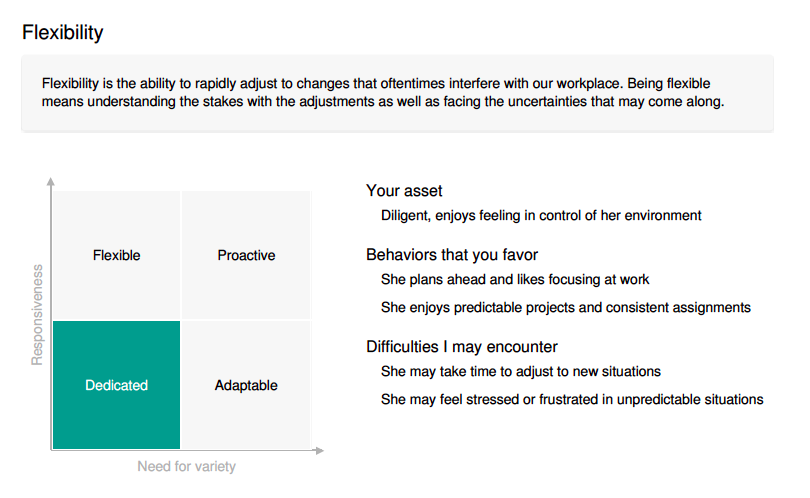
You can see that Jennie is a dedicated planner and thrives with a predictable structure. If the position you’re hiring doesn’t match that kind of environment, it won’t matter if her experience and hard skill set is a match, she probably won’t be a happy, long-term employee.
With the insight and intelligence that Talentoday provides added to your interview process, you’ll be confident that you’re choosing the right employee for your team.
Want valuable insights on your top recruits ? Start your free trial today and use predictive analytics and psychology to make smart hiring decisions. And if you like this post, please hit the ❤️ button below or give me a shout on Twitter.
Replacing an employee costs you 9 months of their salary
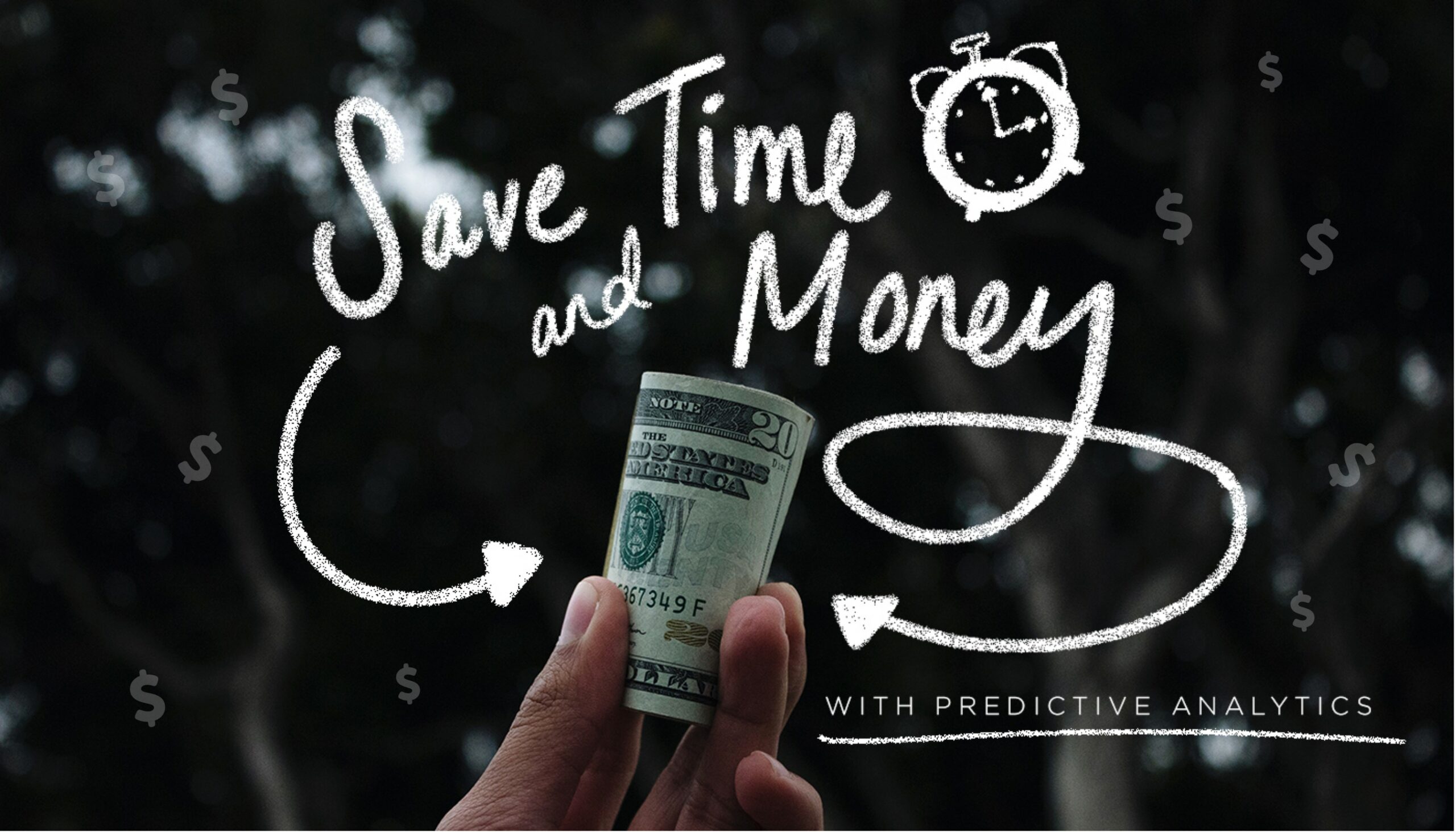
According to Zane Benefits, every time a business replaces a salaried employee, it costs 6 to 9 months of that person’s salary in recruiting and training costs. One way to lessen turnover (as well as save time and money!) is to use predictive analytics in assessing candidates during the hiring process.
Predictive analytics uses data to forecast future results. Forbes explains that companies have used predictive analytics to “predict trends, understand customers, improve business performance, drive strategic decision-making and predict (consumer) behavior”. Companies use this data to increase sales and decide on new products to develop, but they can also use predictive analytics in the hiring process. This type of data is key to understanding the personality traits and behavior profile of a potential employee, ensuring the candidate will be a long-term match for the company.
A study by Cornell University identified what traits should be reviewed using predictive analytics for recruiting executives in particular. They looked at two types of behavior orientations: resource-problem solving oriented and people-oriented. “The research found that the former group was key in predicting initial performance while the latter group was a more accurate predictor of future performance trends.”
In 2012, Wells Fargo started implementing predictive analytics for screening employees prior to hiring. By 2015, they screened over two million people and reported to Predictive Analytics Times that after studying retention rates, “teller retention improved by 15% and personal banker retention improved by 12%”.
While the need for predictive candidate assessments is critical, setting one up from scratch can cost up to $10,000 and take hours to administer! The good news for businesses of all sizes is that technology has evolved so that recruiters and Human Resource Managers can test thousands of people in only fifteen minutes for a small price per month by using a service like Talentoday Manager.
Talentoday can predict an individual’s behavior in the following categories: teamwork, ability to take initiative, management style, ability to handle pressure, reasoning style, communication style, and flexibility. Below is an example of a marketing specialist named Alex. Alex’s assessment shows that stressful situations energize her, and that under pressure, she’ll be motivated rather than put off by challenges.
An employer is never going to change an employee’s personality traits, but behaviors can be taught. Tools like Talentoday’s use objective, psychology-based screenings to provide employers critical information on candidates’ personalities and motivations. In this way recruiters and talent managers can best predict a candidate who will thrive in a particular role, and what training a great candidate might need to fill the gap to ensure long-term success.
Curious about how analytics can save you time? Start your free trial today and use predictive analytics to make smart hiring decisions. And if you like this post, please hit the ❤️ button below or give me a shout on Twitter.
People don’t leave companies they leave managers.

7 Keys to Long Term Employee Happiness
When employees quit, it’s not their company they’ve had enough of, it’s their managers.
Forbes reports from multiple data sources like Gallup and Dale Carnegie that 60–70% of employees are not working to their full potential or engaged with the work they’re doing. That’s a frightening majority! And worse, the cost in lost productivity to U.S. companies is more than $450 billion.
There are reasons beyond the boss relationship that might cause an employee to become disengaged and quit. From personal reasons (Harvard Business Review reports a 16% job hunting spike surrounding when people attend school reunions!) to changes in an organization, like layoffs, which can create insecurity. But the key relationship that will make or break an employee’s success at a company is the one he has with his boss. As Harvard Business Review points out, “in general, people leave their jobs because they don’t like their boss”.
The disengagement numbers are shocking, but it’s also an incredible opportunity to increase productivity through making some positive changes.
- Analyze the flight risk of employees, before they leave. Some companies use an outside firm like Joberate to track who employees are connecting with on social media to predict who might be thinking of leaving.
- Create an open dialogue around motivation and job satisfaction. Conduct “stay” interviews to touch base with employees regularly.
- Get data that delves deeply into a person’s motivations with a tool like the Talentoday Manager.
- Offer internal position openings to employees thinking of leaving. Harvard Business Review highlighted Credit Suisse as using this tactic to reduce attrition of 300 employees and saving the company at least $75 million.
- Give employees more freedom. A study of job satisfaction done by Tiny News showed that “those unfortunate souls whose hands are regularly tied are 28% more likely to think about finding a new employer.”
- Don’t work employees to death. Also according to Tiny News’ research, “employees that are tired and burnt out are 31% more likely to think about looking for a new job”.
- Most importantly: hire the right managers. As Gallup CEO Jim Clifton said, “The single biggest decision you make in your job — bigger than all the rest — is who you name manager. When you name the wrong person manager, nothing fixes that bad decision. Not compensation, not benefits — nothing.”
Every employee is motivated differently, and companies need to know what inspires its team. It’s not correct to assume that a raise or a promotion will always work. In fact, research done by CEB shows that “50% of employees who accept a counteroffer leave within 12 months.” When you know what motivates your employees, using a tool like Talentoday’s, you’ll know best how to keep your talent happily in their seats.
Curious to find out if your employees are happy? Start your free trial today to see if you are motivating your team the right way. And if you like this post, please hit the ❤️ button below or give me a shout on Twitter.
How to Build Team Effectiveness: Using Data Driven Recruiting
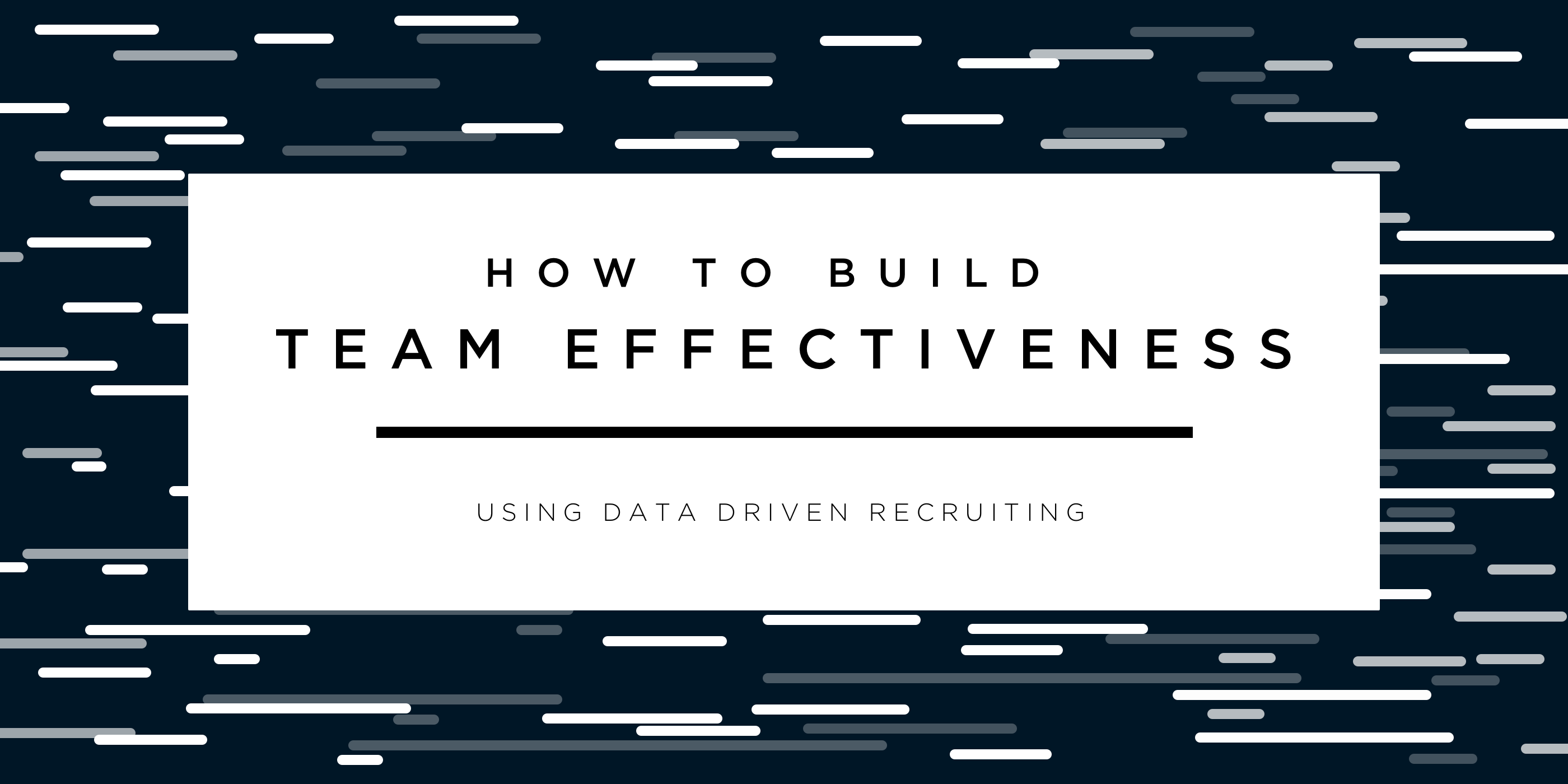
In this three-part series on Team Effectiveness, we first touched on the importance of individual awareness, and the significance of knowing how your soft skills can best serve your team. We then dove into management techniques for creating organic team synergy. Today, the focus is shifted to recruiting.
Traditionally recruiting is done on a need basis. A job needs to be filled, resumes are collected, interviews take place, and things boil down to a gut feeling on who we think we will be the best fit. As we know, time is money, and the quicker the job is filled the happier the company is with you, at least for the time being. We fill the position and hope that our intuition served us right. With all the factors to consider (needs and expectations of the employer’s, needs and expectations of the potential employees) you are juggling a lot of pieces. It is no surprise with the demands placed on recruiting that there is room for disconnect.
The times are shifting from the more archaic way of recruiting (think stacks of resumes, endless email threads, scheduling multiple interviews) to a data driven model that focuses on soft skills rather than previous education, jobs and socio-economic backgrounds. Trying to fit someone to a job with that information alone is like putting together a puzzle without knowing what the end picture will look like. Studies show that it is not one’s past, but their current emotional intelligence that actually sets them up for future career success.
While it’s not realistic for all recruiters to be psychologists, nor is it realistic economically for each individual to go through a psychiatric evaluation with a psychologist, there are HR analytics platforms available that are focused on identifying an individual’s soft skills and not only that, but how they can translate to the workplace.
How can your business benefit from data-driven recruiting? Here are a few ways:
- Focus on soft skills and how they fit in the workplace. Team interactions boil down to individual personalities and motivations and that’s not what you find on a resume.
- It saves you time. These tests are done online and by the individual on their own time. All you have to do is read the results. This could save you time scheduling, facilitating and possibly a few interviews.
- It is measurable. With all this data at your fingertips, there is endless ways to manipulate it in order to measure growth, strategize for the future, or see trends. It seems like it would only get better over time too…imagine if you had the soft skills not only for the person who you are trying to recruit but the one who you are replacing. Your job would be finding the perfect match, and the data could help you.
What does this really look like? Talentoday has a personality test and job matching platform out there designed by top data scientists and psychologists. The assessment tests over 20 personality traits and 8 professional motivators and allows you to compare candidates against each other. Results can look something like this:
If employee retention and creating a strategy for hiring in the future is something you would like to get involved with, it may be time to move into the modern era of recruiting and give data a chance.
Eager to please your clients with data and recommend the candidates that fit the job? Check out our page to sign up for for your free trial of Talentoday Manager. And if you like this post, please hit the ❤️ button below or give me a shout on Twitter.
How to Build Team Effectiveness: Bringing Balance by Empowering Management
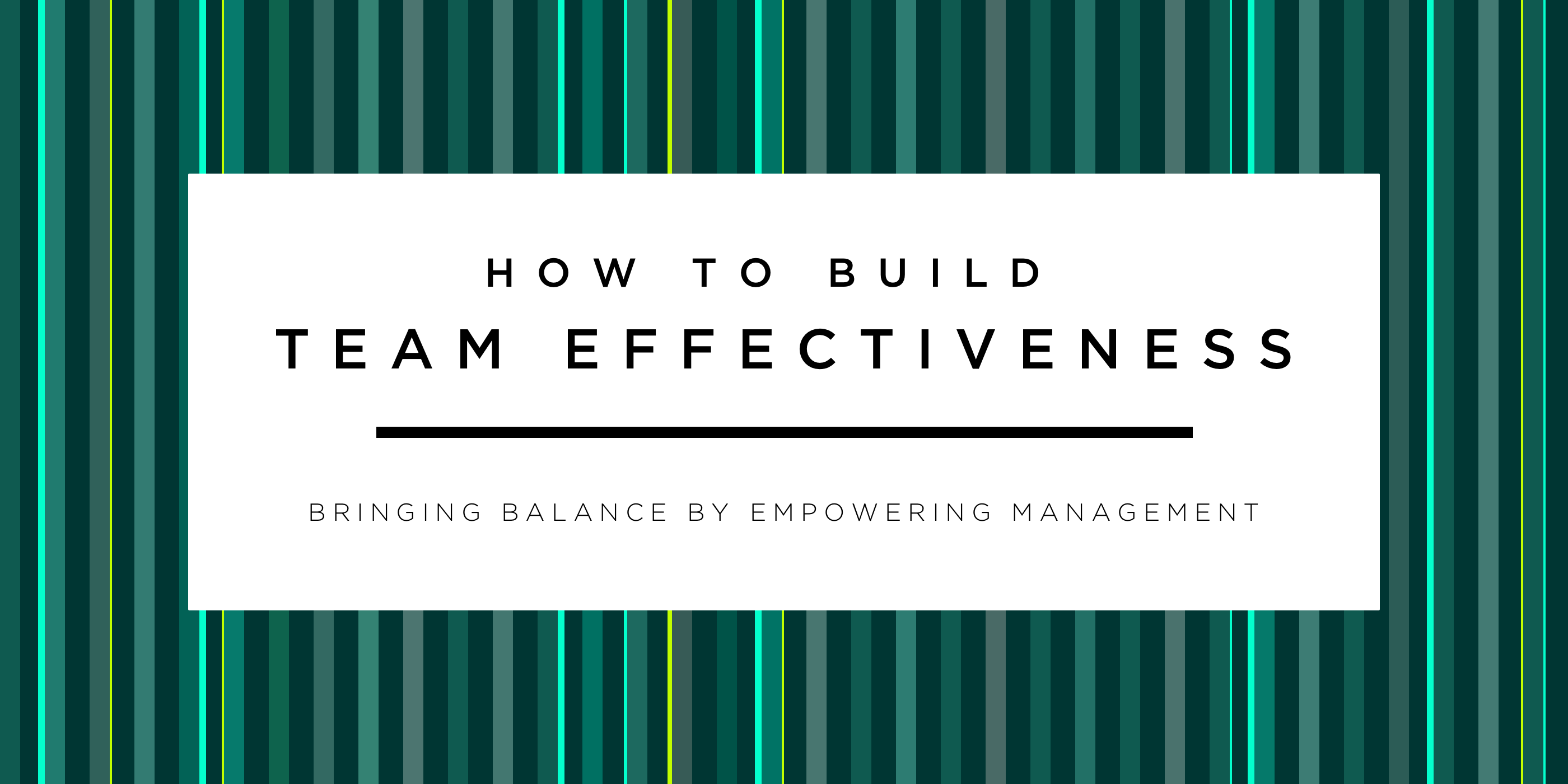
Last week I touched upon the importance of individual self-awareness for team effectiveness in Part 1 of this series, How to Build Team Effectiveness: It starts with the Individual. Today I will shift my attention to leadership within the team, and what managers should strive for when creating a balanced team.
I decided to interview a long-time successful leader, Gino Blefari, CEO of Berkshire Hathaway HomeServices. With 30 years of management experience under his belt and numerous awards in leadership and mentorship, I knew he would have a few nuggets on team effectiveness.
Gino first said that a key to his success in inspiring teams is that he is constantly learning. He is always picking up books and learning new techniques from authors new and old. The books he reads are not just business books, some are fictional novels, others autobiographies, all in which he is able to prune out important takeaways.
When I asked him what makes up a good team he got excited, telling me he had just read The Boys in the Boat, a feel-good story about superstar rowers on a quest to achieve Olympic victory. He said not only was the story incredibly inspirational, but weaved in the keys to a successful team that are applicable to every industry and profession.
“Crew races are not won by clones. They are won by crews, and great crews are carefully balanced blends of both physical abilities and personality types … And capitalizing on diversity is perhaps even more important when it comes to the characters of oarsmen. Good crews are good blends of personalities; someone to lead the charge, someone to hold something in reserve; someone to pick a fight, someone to make peace; someone to think things through, someone to charge ahead without thinking. Somehow all this must mesh. That’s the steepest challenge.”
It goes without saying that every team is different. What makes a team dynamic and productive is having variety. Building on the knowledge of an individual’s skill set, managers can harness their unique skills to build teams with balance. A smart manager knows what to look for but often has little time. Gino & I discussed that his busy schedule has pushed him to make every minute count.
As a manager, it is your job to create an environment that fosters this idea of synergy. Synergy is defined as the interaction or cooperation of two or more individuals to produce a combined effect greater than the sum of their separate effects. When I asked Gino how he achieves this with his teams, he was ready with an answer,
“The closer the team is together, the better the team will perform together. When individuals become accountable to their teammates, that’s when productivity grows exponentially.”
Every time someone new joins his team they are assigned an accountability partner. You are responsible for talking to your partner every day, whether it is a call or an in person meeting. The goal of the call is to get to know your teammate as an individual, aside from work. In a dream world this would happen with every new hire across all companies. But time and expansion can cause managers to cut corners when getting to know their teammates, throwing a wrench in that whole “synergy” thing.
So how can we stay in tune with our employees changing needs especially when we are pressed for time? One option might rely on technology. For instance, Talentoday, a people analytics platform and soft skills personality assessment, allows a manager to become the psychologist who can artfully concoct the perfect blend of personalities to create an effective team.
Similar to Gino’s “accountability partner” idea, Talentoday’s Premium Development Report allows you get an in depth analysis of an individual’s personality traits and motivators in the work place. Everyone is unique and we all have different drives that get us out of bed in the morning. As a manager, having these insights in your back pocket would no doubt give you the information you need to keep your employees engaged.
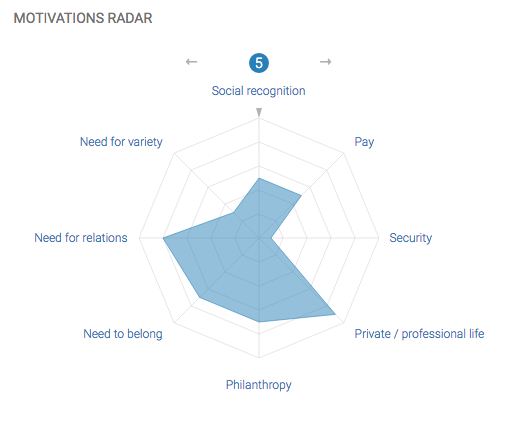
But this idea of getting to know your employee both personally and professionally only works if you have hired the right individual in the first place. Which brings me to my final thought; fostering team effectiveness begins with recruiting the right people. Next week we will take a look at the recruiting process and the important combination of data and intuition when selecting people to join your team.
Curious to find out your professional traits? Check out our page to take your free personality assessment today. And if you like this post, please hit the ❤️ button below or give me a shout on Twitter.
How to Build Team Effectiveness: It starts with the Individual
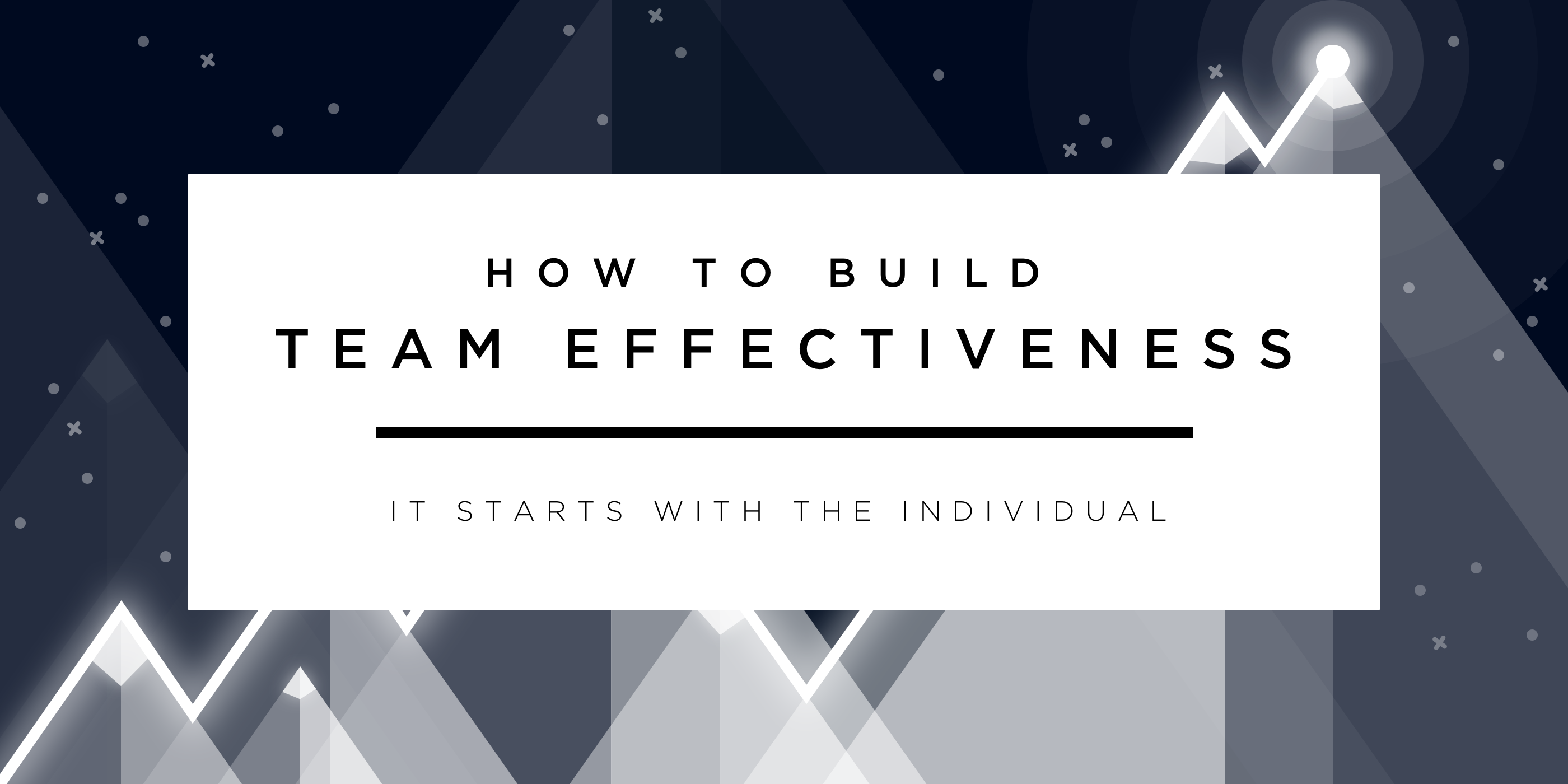
We have been conditioned since we were children to use teamwork. As a toddler you worked with your imagination and your team of playmates to create a different world. Or maybe you worked with your siblings to build the most effective Lego fortress. Learning and productivity and the uniqueness of your work was most likely positively correlated to the ability of you and your teammates, friends, siblings to communicate. You knew your skills and you weren’t afraid to express and utilize them.
Fast forward 20, 30 maybe 40 years and you now know the “best” characteristics to have as a teammate (thanks, Google). It doesn’t matter what your natural skills are, you have read studies about what employers want to hire and you identify with that to make you competitive. You probably believe yourself by now! You alter your skill set for the job. Anyone who has edited their resume for a certain job can relate…
Things are a little backwards right now. A job is open and we try to fit the person in the job instead of fitting the job to the person.
An opening in a team arises and we add someone based on their experience and usually don’t have much of an idea about how they will work on a team besides the characteristics they portrayed from their years of research on what you want to hear. We hire in hopes that they will fit with the team dynamic.
I thought I knew a lot about my natural skill set because I love personality tests. Myers-Briggs, the Enneagram, you name it I have taken it. The thing about these tests is they were putting me in a box again. Fitting me to the type instead of the type to me. My colleague and I have the exact same Myers-Briggs score. We are both ENFJ’s which account for about 5% of the population. The Enneagram also named us both “The Helper”. I can tell you right now if you put us on a team we will not be doing the same job and we both bring very different skills to the table in a team environment.
So we are left with a disconnect of how our personality can help us be effective on a team. How our natural characteristics can transfer into the workplace. It was not until I took this questionnaire that I had clarity on how my personality skills can serve me on a team. I passed the test onto my colleague and was surprised, but then again not, that our results were far from the same.
If you are the individual reading this, it’s time to get honest. Take yourself out of the work equation for a moment and think about what part you play on the team at home, with your friends, or in public. Think of your instinctual skills and try to bring that to your work team. Maybe have a conversation with your manager about how you can bring your skill set to the forefront of your work.
If you are a manager, hold tight! Now that we know the success of the team is built on individual awareness, we can turn our attention to the factors of building the most effective and productive team in Part 2 of How to Build Team Effectiveness: Bringing Balance with Empowering Management.
Curious to find out your professional traits? Check out our page to take your free personality assessment today. And if you like this post, please hit the ❤️ button below or give me a shout on Twitter.
HR Managers are Redefining Merit to Justify Discrimination

Studies show that gender and culturally diverse companies are more successful. This report from McKinsey found that businesses that are gender diverse are 15% more likely to financially outperform homogenous companies, and businesses that are ethnically diverse are 35% more likely to outperform less diverse ones.
Yet, according to this study by Yale researchers, decision makers may downplay the importance of a female applicant’s areas of expertise and inflate the importance of her areas of weakness. Alternatively, decision makers may view the credentials of a specific male applicant as essential to job success and view his areas of weakness as nonessential.
Many companies are trying to improve diversity, or at least claiming they are. Earlier this year, Airbnb announced they assembled a team of civil rights leaders (including the former Attorney General Eric Holder) to review and update the company’s anti-discrimination policies. “I want us to be smart and innovative and to create new tools to prevent discrimination and bias that can be shared…” said co-founder Brian Chesky in this blog post.
Blogger Erica Jones candidly discussed her own experience being the sole black woman on various IT teams, encountering racial bias’ both blatant (degrading comments by coworkers) and clandestine (the company hiring out on a project Jones was the most qualified to do). Jones said,
“I am a black woman who happens to work in the tech industry. I don’t need to change to fit within my industry. My industry needs to change to make everyone feel included and accepted.”
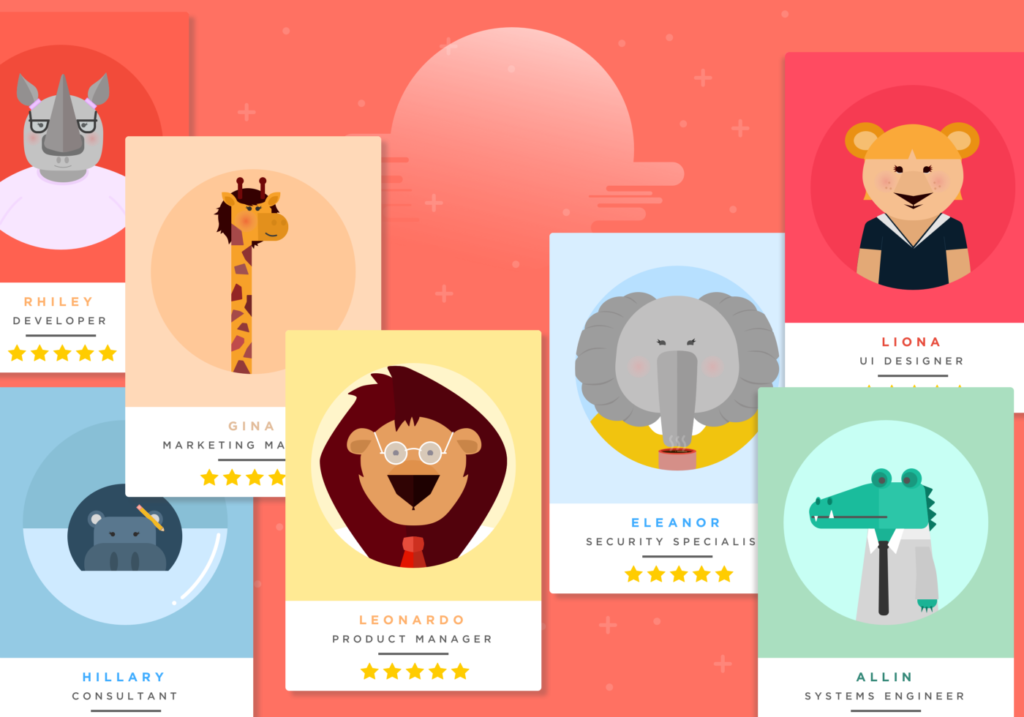
Some companies are making progress on gender diversity. Fortune recently reported that food-delivery company Grubhub has seen success with 50% of its executives being women, 43% of its workforce, and 23% of its engineers (10% more than U.S. average).
Recruiting talent from a larger pool of backgrounds lends itself to a more balanced team. One can see how, in this analysis by Talentoday who reviewed real personality comparisons by country:
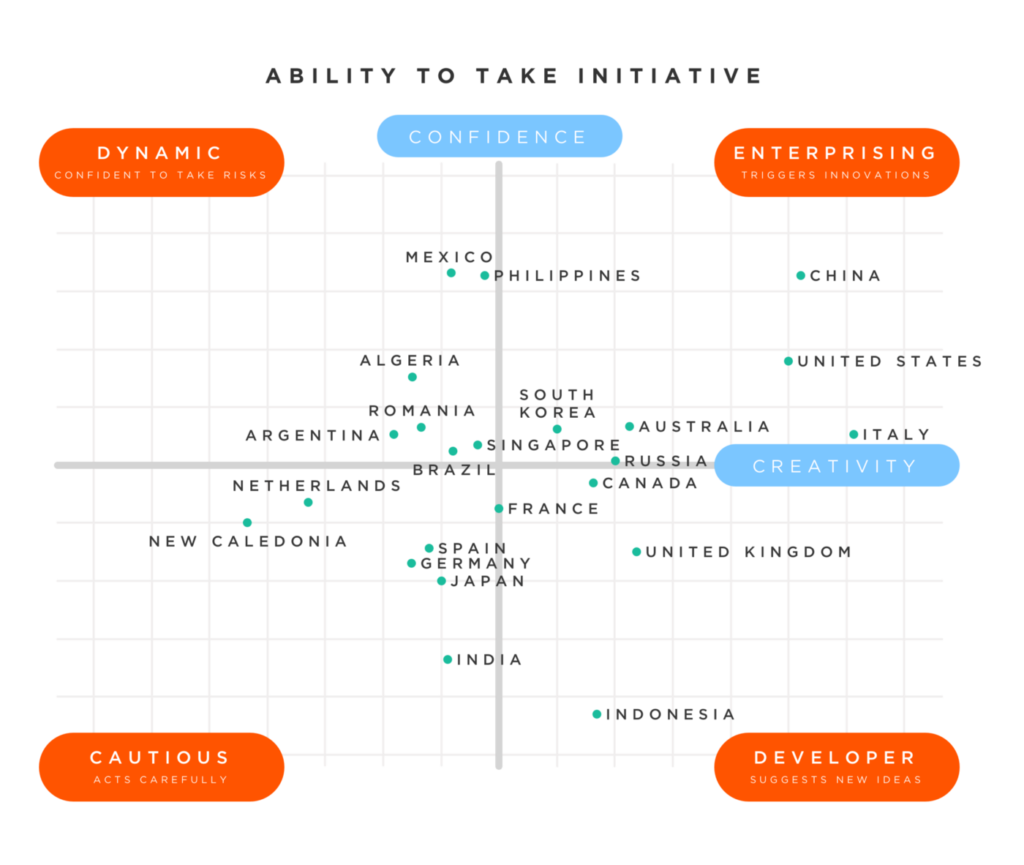
Having a team of dynamic, cautious, enterprising and developer mindsets is ideal — for balanced idea generation and execution. The enterprising person inspires the developer, the dynamic person’s boldness is balanced by the cautious. As the graph above shows, if one only hires people from the U.S. it can be harder to obtain such a diverse team.
Avoiding discrimination bias and fostering a culturally and gender diverse team begins with the hiring manager. Companies who try to do diversity well often make the mistake of casting a wide net initially, but bias’ show up in the final selection. Hiring managers shouldn’t focus on people that are most similar to him or her, but rather aim for as wide of a range of a group as possible. The real problem lies in the bias of the final selection from recruiters and hiring managers.
Disrupting the Bias
One way managers can minimize their bias may be by evaluating the skills of candidates using a personality assessment tool. This gives managers and recruiters an objective way to look at a persons soft skills to create a team that works best together.
But not all tools are created equal. As Nanette Byrnes wrote in this piece on Technology Review,
“the danger remains that unrecognized bias, just in the programming of an algorithm but even in the data flowing into it, could inadvertently turn any program into a discriminator.”
Algorithms must be specifically tailored to minimize the bias, like objective data found in the Talentoday manager that helps reduce the bias of decision makers. Talentoday takes a look at the motivations and personality traits needed to succeed at a given job. Managers can assess their candidates and match the personality results to the industry standard to find the right fit, scientifically.
Another company has taken a different approach. GapJumpers has reworked the hiring process to include blind interviews modeled after the hit TV series The Voice. Cofounder and CEO, Kedar Iyer, states,
“If one industry, especially a shallow one like the music industry, can do [blind auditions], why can’t tech companies, which are so much more scientific, do them?”
GapJumpers found that male applicants raised concerns about having to prove themselves in a blind test more often than women. Once the blind challenge was completed, the gender breakdown of those candidates hired was 58% women, 42% men.
At the end of the day, in order to interrupt the process of judgment the focus must be shifted to evidence and away from perception. We may be a long way from changing human conditioning but companies can adapt with tools to make the hiring playing field less biased.
Check out our page to send our free personality assessment to your potential new hires today. And if you like this post, please hit the ❤️ button below or give me a shout on Twitter.
How to hire a world class developer

Just like relationships, hiring is a two-way street. As a hiring manager, not only do you need to find the right fit for the position, but you need to make sure the right fit wants to join your team.
What makes a successful software engineer?
We have surveyed thousands of software engineers and have found that universally developers are motivated by both pay and social recognition. But first, let’s look at what traits to look for in your next engineer. According to the Talentoday Software Engineer Target Profile there are three stand-out personality traits developers have in common: ambition, independent mind and creativity.
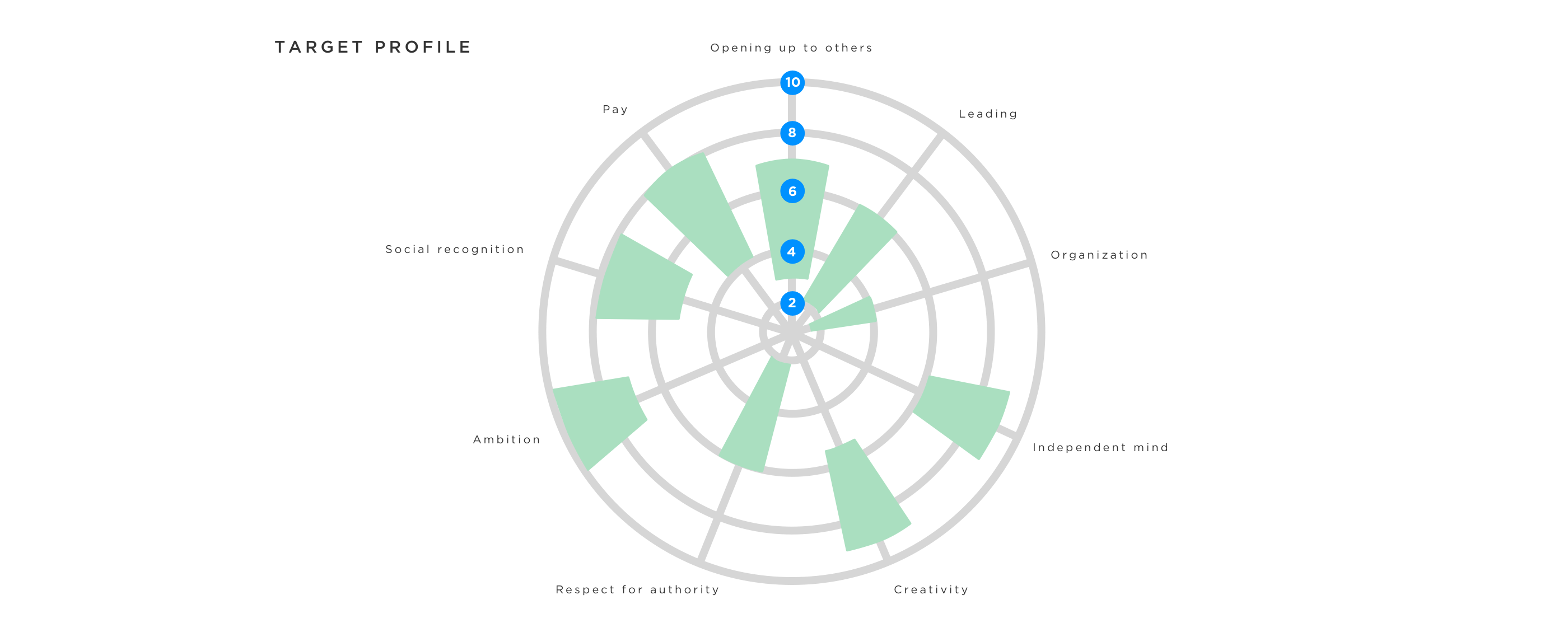
Ambition
As the cliche goes, “shoot for the moon, if you miss, you’ll land amongst the stars”. By far, the most important quality to look for in your next software engineer is high ambition. As recruiters, we tend to look at the past. “What did you do?, How successful was it?” It is important however, to also pay close attention to future goals and motivation of your next developer. Software engineers are constantly innovating and creating new content. Be certain they are excited to strategize and problem solve for your company.
Creativity
Your best software engineer is an expert at innovation. They think outside of the box and don’t necessarily go by the books. How can you know if your engineer is creative? Ask them! For example…”Tell me about a time where you tried to solve a problem in an unconventional way. How did it work out for you?” Remember, it’s not so much about the result of their actions as their attitude towards creativity.
Independent Mind
Whatever you do, don’t hire the software engineer who needs to be micromanaged. You want a leader. Someone that has a clear vision for the next steps for the company and who can problem-solve. Inquire about what role he or she played on their last team and how the dynamic was.
A note on how to motivate your new engineer.
Stand out amongst other companies with your job offer Believe it or not, most software engineers generally want the same thing: social recognition and pay. So instead of wasting your time on benefits and time off, you may seal the deal with a simple bonus and fancy title. Yep, it’s as simple as that. Now go out there and get your next best software engineer!
Curious to see if your candidates have what it takes? Check out our page to send our free personality assessment to your potential new hires today. And if you like this post, please hit the ❤️ button below or give me a shout on Twitter.


